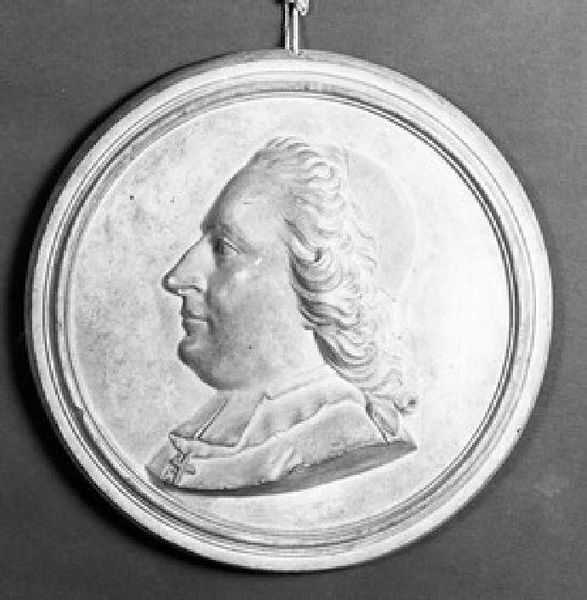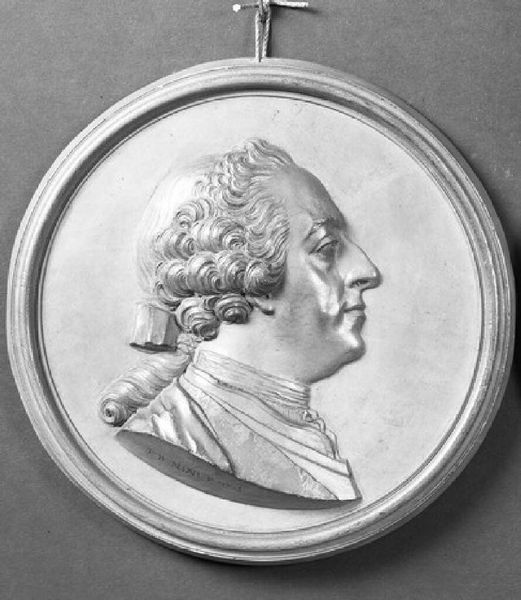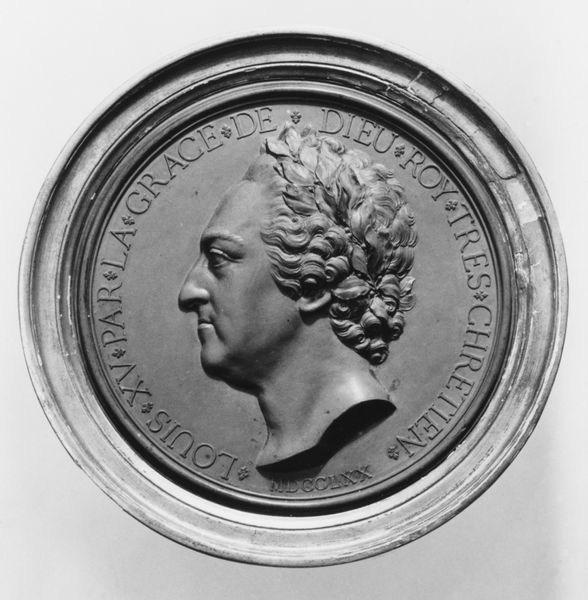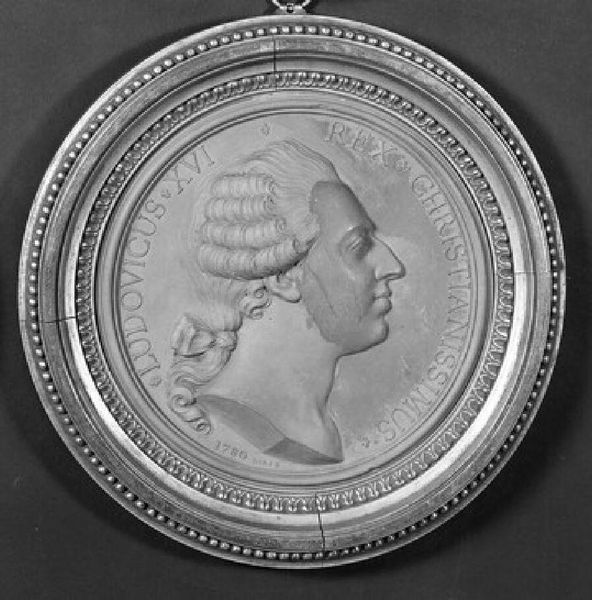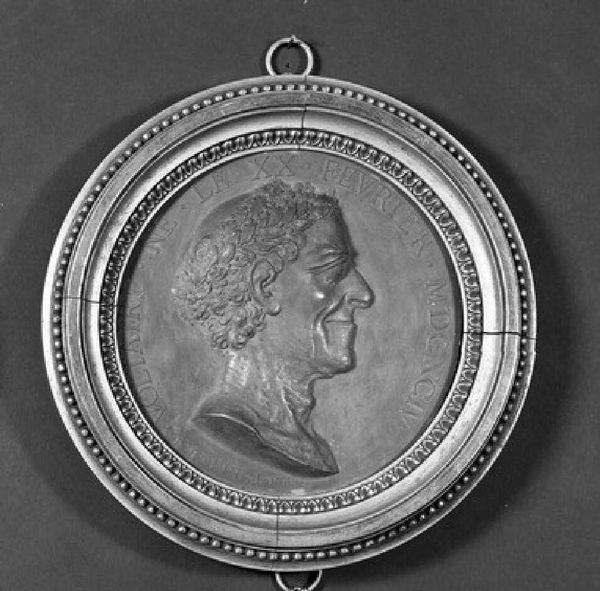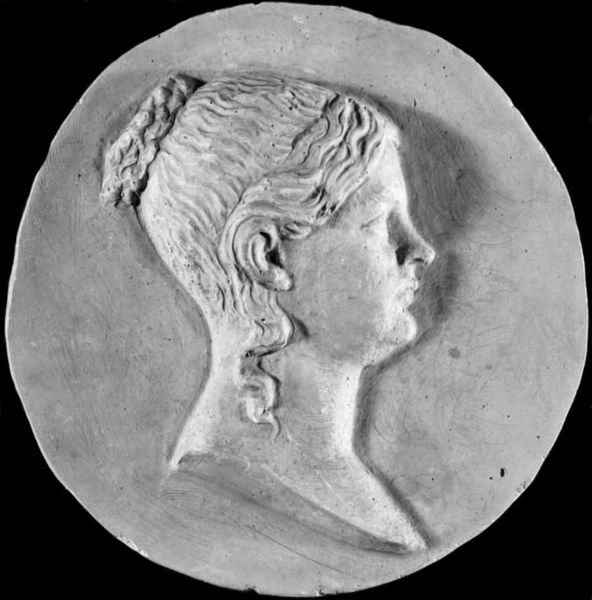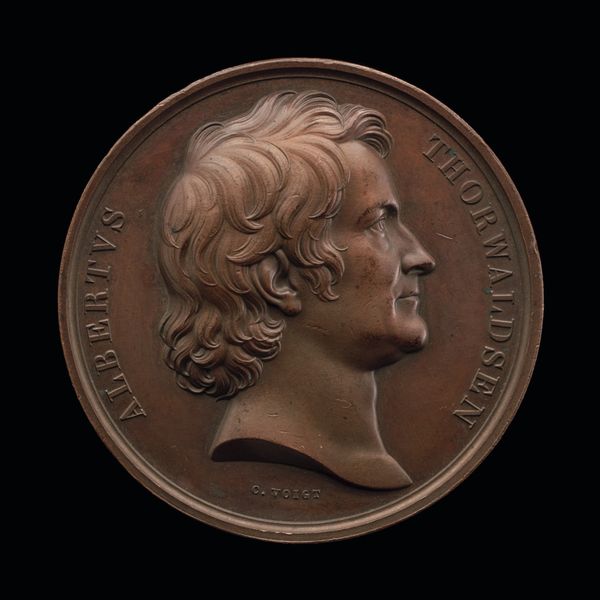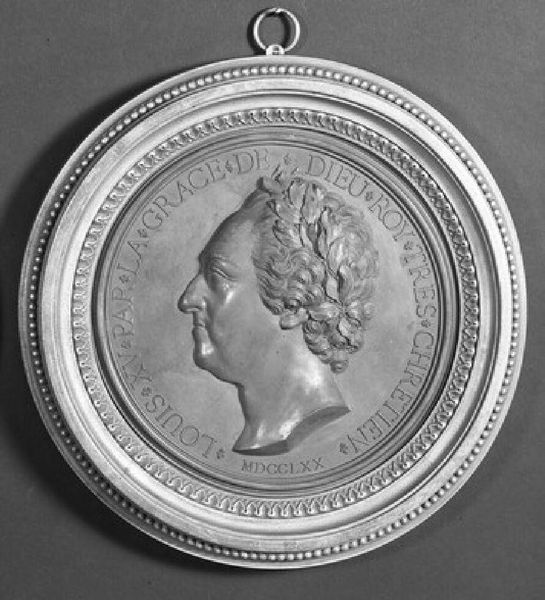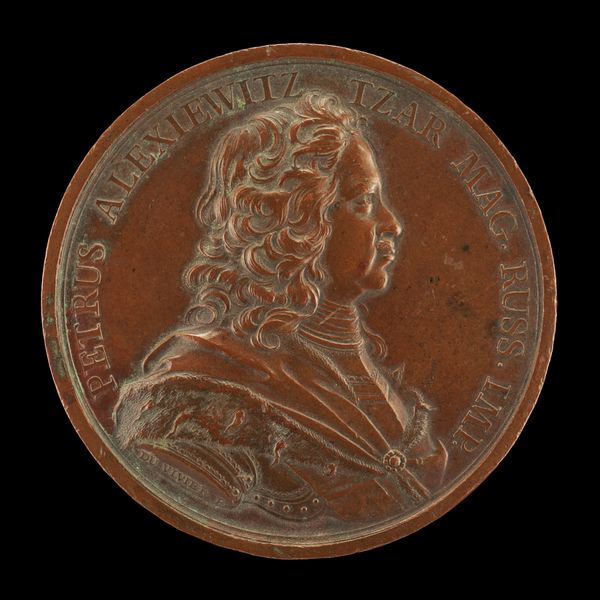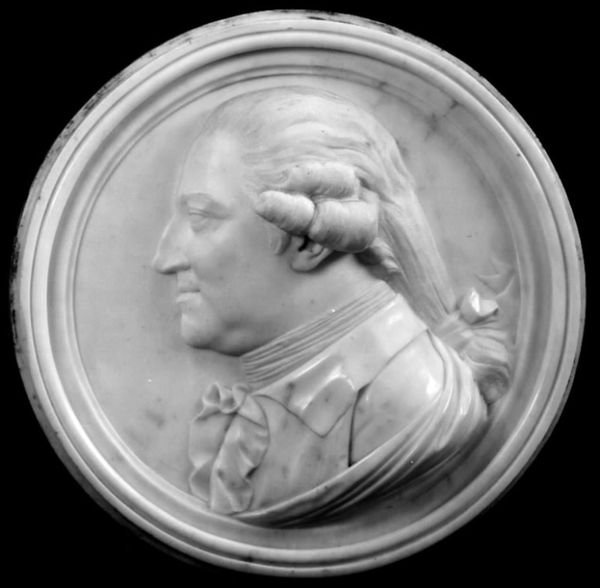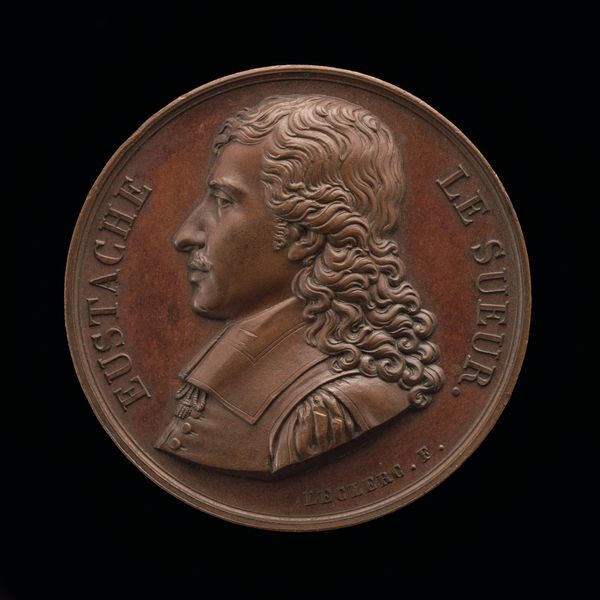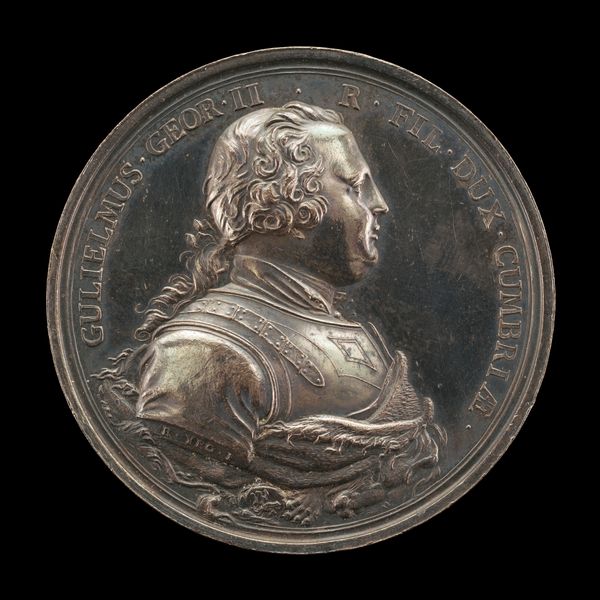
relief, sculpture, marble
#
portrait
#
neoclacissism
#
sculpture
#
relief
#
sculpture
#
black and white
#
marble
#
statue
Dimensions: 13.2 cm (depth) x 63 cm (None) (None)
Curator: Eric Gustav Göethe created this marble relief in 1803. The piece is entitled “Grev Johan af Pyke,” which translates to “Count Johan af Pyke,” and you can view it today at the SMK, the National Gallery of Denmark. Editor: Oh, what a stern face, frozen forever in time. It reminds me of a cameo brooch my grandmother wore – so formal, so… neoclassical. I mean, look at that precise, almost severe profile. Curator: The style absolutely aligns with Neoclassicism, which consciously draws from classical antiquity, emphasizing order and rationality in reaction to the preceding Rococo's extravagance. Consider the visual politics, how classicism can operate as a mode of idealizing powerful figures, connecting them to historical ideals of leadership and governance. Editor: Politics in portraiture, eh? Well, if this fellow isn’t trying to impress someone, I don’t know who is. The hair, though—I can’t help but fixate. It’s like sculpted frosting cascading down his back. It strikes me as a counterpoint. Curator: Yes, it's interesting how the artist incorporated softer, almost baroque, elements into this otherwise rigid style. The inclusion of the Order of the Sword further signifies Count Pyke’s standing within the Swedish aristocracy and military hierarchy, solidifying a message of state authority. The choice of marble too lends itself to connotations of wealth. Editor: The Order of the Sword… Fancy. I'm still caught up in the waves and swirls. Makes you wonder what kind of man he was behind the pomp and the marble. Probably enjoyed a good wig. You have to admire the craftmanship, really. It looks incredibly preserved considering its age, all that neoclassical chill locked within that tight circular frame. Almost feels hermetic. Curator: A certain sense of distance definitely permeates it. Perhaps in that very quality rests part of its social critique; the limitations and aspirations of a class captured within marble for us to continue studying today. Editor: Ah, critique from beyond the grave! He may be stuck, but at least he provokes thought! Curator: Absolutely, which speaks to how art objects engage the present. Editor: Indeed. Art isn't just something that sits still, is it?
Comments
No comments
Be the first to comment and join the conversation on the ultimate creative platform.
